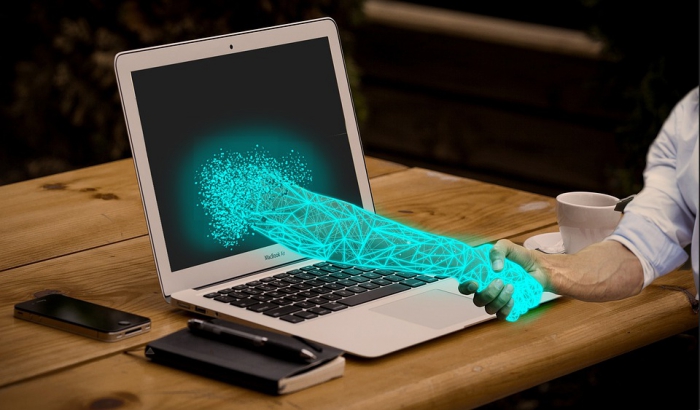
The Italian legislator since the law n. 633/41 has addressed the problem of the use of photography through its protection through the release. In fact, in the cases of a subject portrayed in a recognizable way in a photograph, it is necessary to inform him of the intended use of the same. But let's see how.
Nowadays, the diffusion of a photograph follows a frenetic pace. The difficulty of verifying the path in sharing on social networks and the speed with which it is displayed places great responsibilities on the agent.
How many ask, before sharing a photograph, whether or not they are authorized to do so, especially by whom it was immortalized? Often, in fact, talking about it with photographers, it is clear that there is little awareness of this aspect. Perhaps there is no adequate knowledge of the inherent risks, or perhaps there is no clarifying intervention on the part of legal operators.
The person photographed in a shot may be aware of this, or, on the contrary, be unaware of what happened. In the first case, it is considered a duty for the photographer not to consider himself authorized to divulge the photograph. In other words, the fact that the retracted knows that it is being filmed does not mean that it authorizes the disclosure of that shot, at least not implicitly.
In the second case, however, the problem is even more evident, as there is no awareness of the fact for the person being filmed and therefore any use of it is inhibited.
Precisely for these reasons it becomes useful for the photographer to take action, having the retracted sign a specific authorization, better known with the term "release".
Preliminarily it should be noted that when the photographer has the person portrayed sign an authorization document, he must be fully aware of its content. In other words, we must avoid the risk of a boomerang effect on the consequences of a little-known document, perhaps downloaded from the net.
Precisely for this reason, this article of mine wants to indicate some fundamental elements of the release, even though I know that it cannot be exhaustive anyway.
A precise indication of the person being retracted is required. This means indicating name and surname, place and date of birth, residence and tax code.
An aspect that I believe is relevant is the setting of the release for the portrayed person and not for the photographer. In fact, if, on the contrary, it were the photographer to ask for permission to be portrayed, a dominant position of the first over the second could be interpreted.
On the contrary, the portrait that authorizes the photographer to distribute the photographs is more balanced. Of course, the authorization must accurately indicate which photographs are being referred to, with an indication of the place and day of the shot.
The authorization can be granted free of charge or for consideration. In one case or another it must be specified. Furthermore, it is also necessary to specify what it is aimed at. That is, if to the publication and / or if to the diffusion by press / social media / other form of the photographs.
On this aspect it is necessary to be precise, as the unauthorized use can be contested and consequently it can be misused. In this context it is better not to stop only at the immediate project that you have on these shots, but it is advisable to foresee future developments.
It is therefore the task of the photographer who wants to use his archive in present and future projects, determined and / or determinable, to focus on the developments.
It is necessary to indicate the duration of the release granted, especially if it is indefinite. This in compliance with the provisions of Articles 96 and 97 law n. 633/41, as well as of the articles 10 and 320 of the Italian Civil Code
I would like to underline a particular attention to be paid in case of indemnity granted free of charge, and without time limits. The problem may arise in the event that the professional can derive notoriety, economic income and so on from the photo shoot. In this case, there is a risk of contesting the imbalance between those who contributed to achieving a high level of final result, without the right to the consideration, and those who, on the other hand, have benefited from it undoubtedly.
And if even then, in the context of litigation, a clarification could be reached, legal burdens would still have to be faced.
Let's move on to the mention of the release of the authorization by the portrayed to the archiving of the photographs by the photographer. The storage of the material may take place in paper form or on IT support, in compliance, however, with the privacy regulations.
In this regard, the photographer, becoming the custodian of the photographic material that he archives, must respect those rules that guarantee their protection from concealment, unsuitable or unauthorized use.
Finally, a final reflection on the main aspects of a release is the indication of how to use the photographs. This is a paragraph that must be filled in with care, because if you fail to indicate a specific type of use, it becomes impossible, or at least difficult, to change the terms in the future.
Of course, it is not easy to predict the uses of a photograph over time, especially not all of them. Precisely for this reason, a release must be considered with care and attention. All this always keeping in mind the search for a balance between the photographer's perspectives and the protection of the portrait.
Precisely in the light of these considerations, I believe it is too simplistic to download a facsimile of the release form from the network without making the appropriate additions where necessary.
Law Firm
Lawyer Paola CHIAPPINI
Via Mira, 4/10
6129 GENOVA
T.: 010/3624308; 333/8099295
Mail: alba.scozia@gmail.com